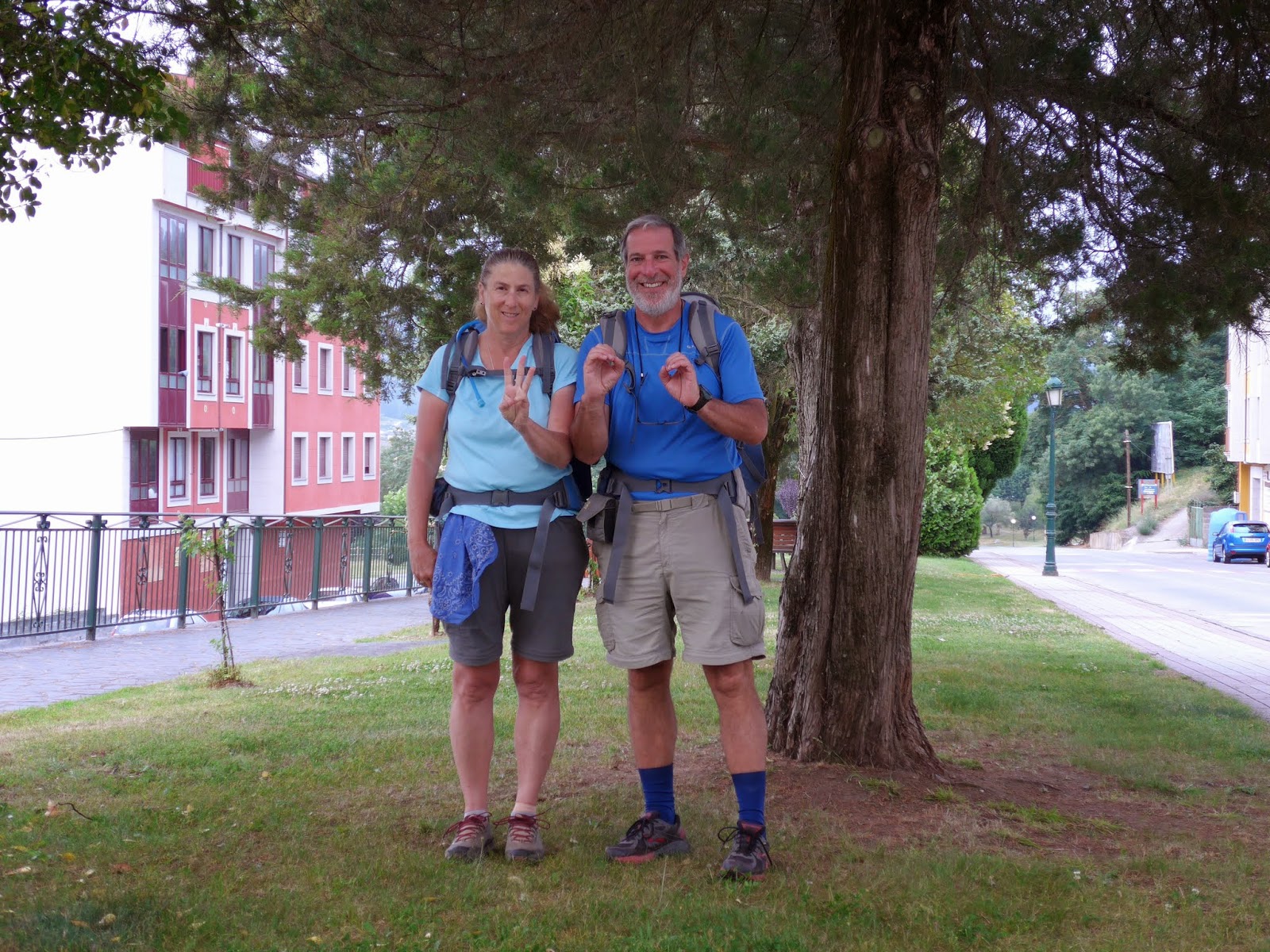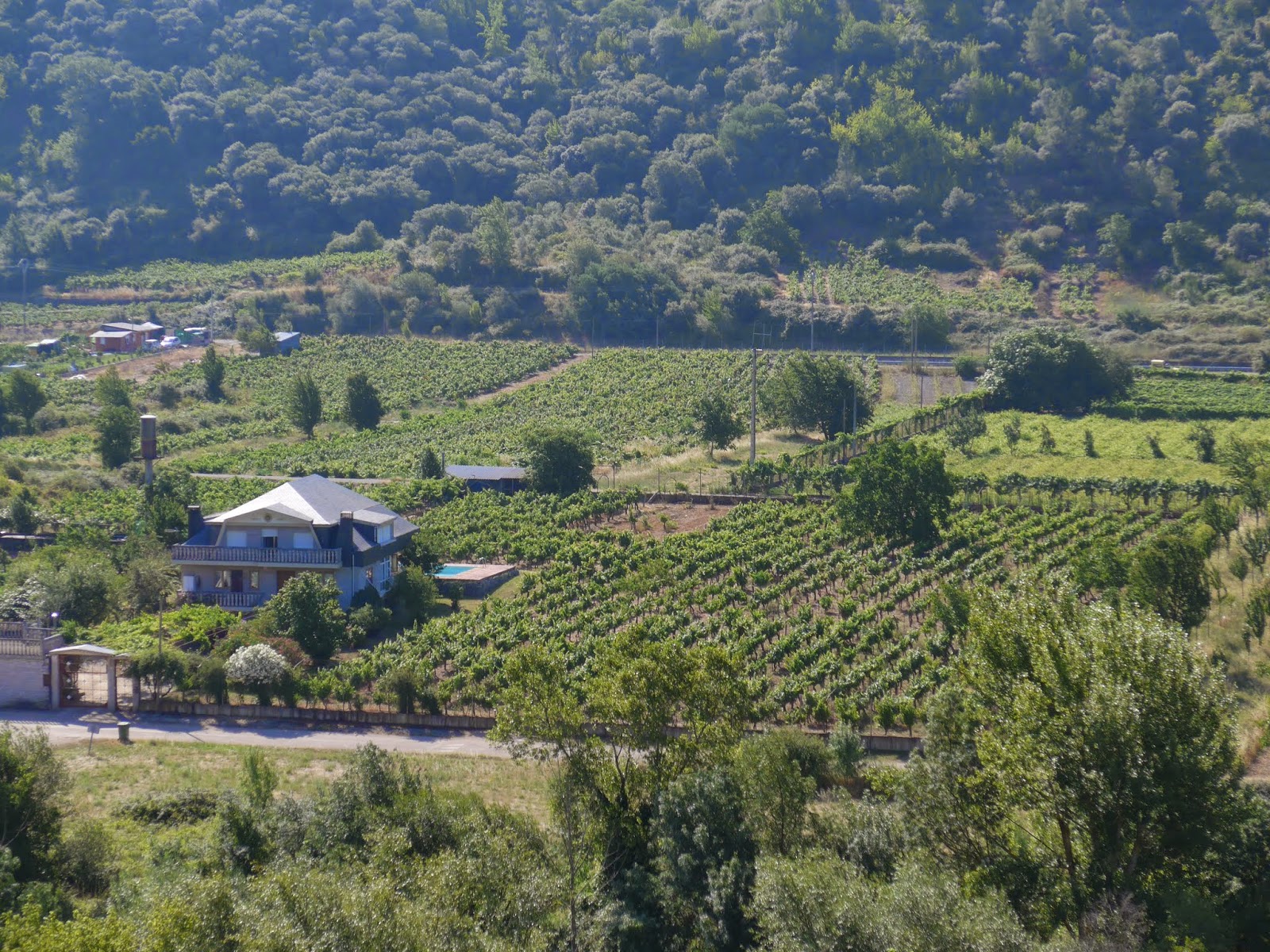Our departure was a bit delayed this morning. When we went up to our room the previous afternoon, the proprietor insisted that we'd settle our tab, and she'd stamp our pilgrim credentials, the following morning when she gave us breakfast. We agreed on 8 am. But when we walked over to her bar at 8, it was locked up tight. We found another bar down the street that was open, and had something to eat there. But we still needed to pay for the room and previous day's meal. After looking here and there, and waiting a while, we called. She rushed downstairs to the bar in a minute, full of apologies: she'd been to a party the night before, came home at 3 am, and forgot to set an alarm. We settled up, had a few laughs, and went on our way a little behind schedule. I hope she went back to bed.
Near the end of yesterday's stage we passed the 400 km mark. Here's our commemorative shot, by Rodeiro's town hall, before setting out in the morning.
It had been raining steadily most of the night, and continued to drizzle on and off as we walked a very pleasant stage through farm country.
This part of Galicia is granite country, and it's used for many purposes including fence posts.
Our route was very meandering and passed through a number of tiny villages.
About the only ones up and about on this Sunday morning were the dairy farmers and their cows.
Just over halfway through today's stage, we stopped for a moment to shed rain shells. I don't know what happened, but when we started to walk again I had a terrible pain in one foot. It didn't clear up as we walked; it grew steadily worse. I hobbled slowly the remaining 10 km to Lalin, we ate, and then found the first hotel we could with an elevator. My foot was swollen tight inside my shoe, and every step (even leaning on the hiking poles) was a struggle. Even with elevation and icing there was no improvement by morning, so we took a taxi to the health center in town. The doc examined my foot, looked at the X rays, and told me he didn't see anything broken but my camino was over. Darn. The weather was finally clear but not hot, and only three relatively short stages to go.
We called the hotel we'd reserved for three days hence in Santiago, they were able to accommodate us at their sister hotel just down the block, so we boarded a bus. We could see much of the route we would have been following over the last three stages from the bus window as we made the hour ride to Santiago.
The good news is that rest, elevation, compression, and ibuprofen seem to be helping. Now (one day after arriving in Santiago) I can walk better and with very little pain. But the foot is still very swollen so I'm taking it pretty easy, a difficult thing in a city as beautiful and walker-friendly as this one. This is the week leading up to the Feast Day of St James, and the city is full of all sorts of special events and entertainments, along with the usual throngs of tourists and arriving pilgrims. It's a great place to end up, no matter how one arrives.























































